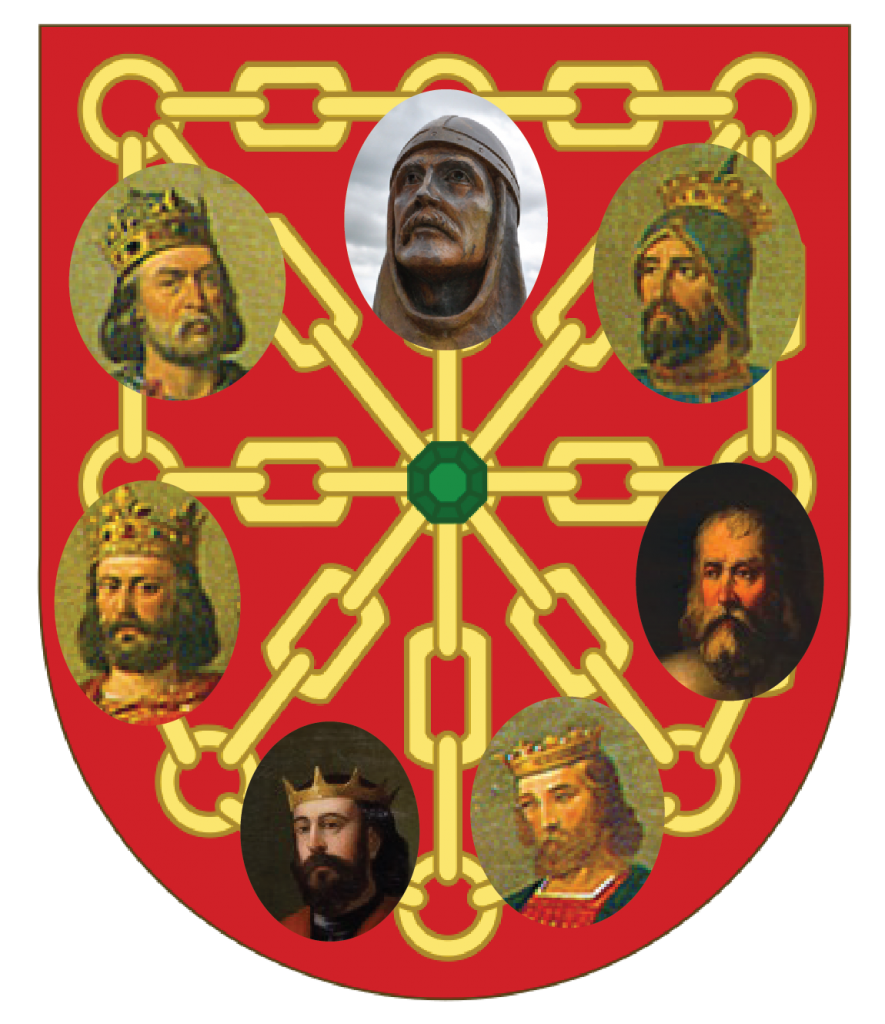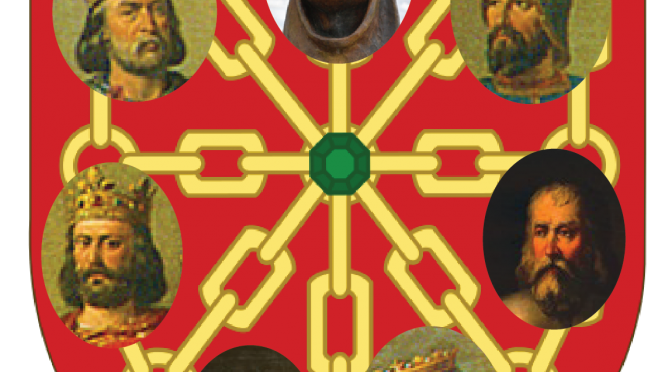If there ever was a single political entity that encompassed all of what we now think of as the Basque Country — Euskal Herria with its seven provinces — it was the Kingdom of Nafarroa, originally known as the Kingdom of Pamplona. On the border of what later became France and Spain, it enjoyed great influence and power for its size due to its location, controlling the mountain passes between the future powers. Weaved throughout its history are a series of kings, the Sanchos, that were instrumental in both the kingdom’s rise and eventual break-up. Their stamp on Basque history cannot be overstated, founding the capitals of the Basque provinces of Gipuzkoa and Araba.

- Sancho I, born around 860, was the King of Pamplona from 905 to 925. His father, García Jiménez, first established the Jiménez dynasty, though Sancho I was the one who really consolidated power and created a meaningful dynasty, with Muslim sources referring to the dynasty as the Banu Sanjo, or descendants of Sancho. During his reign, Sancho I fought often with the Muslim rulers on his borders, winning some key victories.
- His grandson, Sancho II, ruled from 970 to 994, the Kingdom of Pamplona being ruled in the intervening years by Sancho I’s brother and son. Sancho II is the first to be called King of Navarre, so described in the donation of a monastery in 987. By virtue of his mother, Andregoto Galíndez, he also became the Count of Aragon. During his reign, the Codex Vigilanus was completed, a compilation of many documents that included the first western representation of Arabic numerals. His reign was also besotted with various military defeats against the Muslim lords to the south and, in an effort to stabilize his kingdom, he married off his daughter Urraca to one of them.
- Sancho III, also known as Sancho the Great, was born around 992 or so. He was the grandson of Sancho II and ruled from 1004 to 1035. As the Muslim hold on the south began to fragment, Sancho III tried to unify the Christian lands. He expanded his rule, acquiring Castile and León as the consequence of various marriages, fighting, and military victories. At its peak, his rule reached from Galicia to Barcelona. Amongst other things, he also started a Navarran series of currency and was one of the first great patrons of the Way of Saint James. Upon his death, he split his kingdom amongst his sons.
- Sancho IV, Sancho III’s great grandson, was King of Pamplona from 1054 until 1076, beginning his reign when he was only fourteen years old. Soon after his accession, many of the lords of his kingdom defected to León, ruled by his uncle, Ferdinand I. In 1062, they signed a treaty that established their border, with what is now Bizkaia, Gipuzkoa and Araba under Sancho’s control. Not long after, in 1067, the War of the Three Sanchos pitted Sancho IV against his cousins in Castile and Aragón. Sancho IV was killed in 1076 by his brother Ramón Garcés and sister Ermesinda of Navarre.
- Sancho V, then also King of Aragón, took over upon Sancho IV’s death. He was Sancho IV’s cousin and Sancho III’s grandson. He ruled Pamplona until his own death in 1094. After a number of military victories, he was defeated by El Cid at the battle of the Battle of Morella and was killed in 1094 while inspecting the walls of a Muslim stronghold.
- More than 50 years later, after the intervening reigns of Peter I, Alfonso I, and García Ramírez, Sancho VI the Wise ruled, officially changing his title from King of Pamplona to King of Navarra. Born in 1132, he ruled from 1150 until his death in 1194. During his reign, in an effort to solidify authority in the face of Castilian might, he founded the towns of San Sebastián/Donostia and Vitoria-Gasteiz.
- Sancho VI’s son, Sancho VII the Strong, followed his father as King of Navarra until his own death in 1234. He was the first to establish the now-familiar chains as his blazon. He was also the last member of the Jiménez dynasty. He was a close ally of his brother-in-law Richard I of England. While campaigning in Africa, his kingdom was invaded by Castile and Aragon, a consequence of which was the loss of Araba, Bizkaia and Gipuzkoa to Castile. He died childless in 1234, likely the result of a varicose ulcer in his leg.
Primary sources: Wikipedia; please see the various links in the text above.
Discover more from Buber's Basque Page
Subscribe to get the latest posts sent to your email.



and moving forward to 1589, Henri de Navarre, known as Henry IV, ascended the throne of France. The good king Henry IV loved hunting, ride his horse and was a bon vivant. He was quoted as saying ” I rule my kingdom with my ass on the saddle and a gun in my fist”. The edit of 1620 makes it official that all posteriors kings of France will be King of France and King of Navarre.
But most important, in my opinion, the bond that unite the French and Spanish Basques is that we have suffered together during the time of Franco, the Spanish civil war and later WWII. The war on your own soil and to be betrayed by your government is something the American Basques and the American Basques who fought overseas will never understand.
A casual conversation on either side of the border, a word, mention of a place, event, whatever brings back memory, we look at each other–there is no need for words–we understand.
Sabino Arana, the red, white, green flag, the dances , folklore and more is interesting to read but it does not reflects what I believe is the emotional attachment with have for each other on both side of the border. In my humble opinion.
I remember when I was a teen ager, a Spanish Jew who lived in Argentine, somehow found my Dad who had helped him pass over to his final destination, Portugal by going through the Mountains of Aragon–Dad has joined the French resistance. Any way, the man was emotional, tears thanks –Dad put in hand on his shoulder and said to him. “friend, I am humbled that you trusted me with your life”. Then they left the gathering of kids wife and guests and returned home drunk.
you all have a great day.
Monique
Thanks Monique. I always appreciate your perspective.
Blas, wikipedia is the most innapropiate place to get historical information to write a word about the history of Navarre and much less to entrust wikipedia as the source of history. That is a poor approach.
Please be informed that everything written in wikipedia about the history on Navarre has been written by spanish historians and writes.
Pretty much the only truth of your writing are the names of the kings of Navarre, but the rest is just fiction.
what you have written is a tiny part of the history of Navarre written by the castilian and spanish “conquistadores” and subsequently colonized by Castille and Spain.
If you want to be fair in the description of the history of Navarre, please referred to navarre basque historians, the rest is interested fiction.
The seven provinces defined as Euskadi is an invention of EAJ-PNV, same as the ikurrina since 1895, by Sabino Arana.
Navarra is the name of the basque nation conquered and denied by those writers of wikipedia. it was the name that the basques gave prior to the conquests of 1200, 1512 and 1620.
Vasconia was the denomination at the roman times until its consolidation as State of Navarra by the IX century.
Euskal Herria is a cultural identity, it is not a nation or State.
Basque and navarre are two names to designate the same people, same society and the same nation. The intent to deny that basque and navarre are the same people is the position of the same people who deny the nation-genocide inflicted on Navarre.
Thanks for the note, Juan. I appreciate your feedback. I try to use multiple sources when I can, especially the Aunamendi Encyclopedia.
Blas, there are several good historians on the history of Navarre, but presently one of the most revere is Tomas Urzainqui, author of ” La Navarra Maritima”. If you can read in Spanish, this is revealing book on the conquer of western Navarre (Alaba, Bizkaia & Gipuzkoa) and the division of the nation by Castille in 1200.
Since 1200, Alaba, Bizkaia & Gipuzkoa are under the control of Castlle-> spain.
For the JaiAldi of 2020, I was plannig to set a booth at the Expo to sell books about the history of Navarre, Ikurrinas and Ikurras of Navarre…….and wishful thoughts of maybe meet you there but after 2020 & 2021 cancellations , hopefully at 2022’s I will see you there.
My Spanish is certainly not good enough to read a history book, unfortunately.
I plan to be at Jaialdi 2022, so hopefully we can meet there!
Hopefully, since the rate of vaccination is much slower in EH than here, I don’t know whether I get enough help from my connections in Iruna/Pamplona for ikurrinas, Ikurrak and book covers.
We’ll see how things evolve until then.